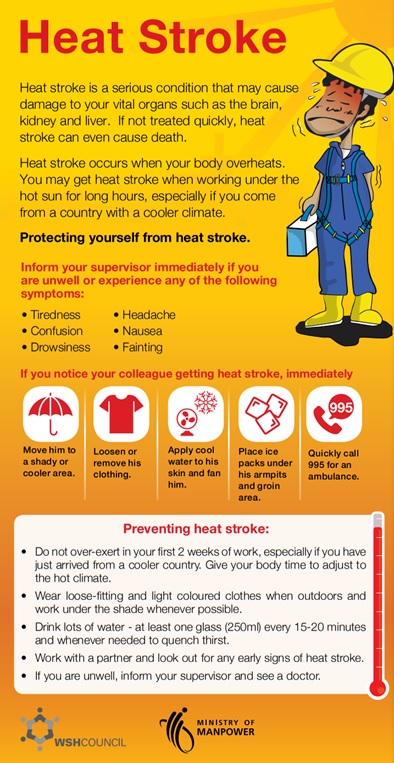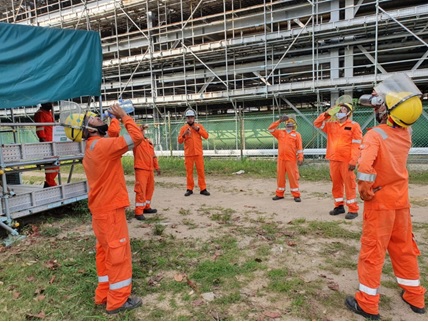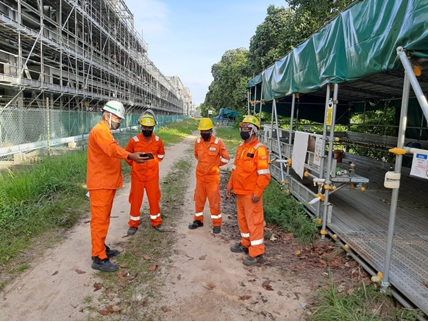News | Mirador Building Contractor
NEWS
Managing Heat Stress at the Workplace
Managing Heat Stress at the Workplace
Singapore is situated near the equator and has a tropical climate, with high and uniform temperature all year round. Usually from March till May, Singapore experiences the hottest weather as compared to the rest of the year. Hot afternoons with a temperature above 32°C are common during these months.
The hot and humid weather condition greatly increases the employees’ risk of heat injuries, especially those who are exposed under the hot sun during their course of work. Examples of heat injuries include heat exhaustion and heat stroke, which may lead to fatality.

Source: Workplace Safety and Health Council, Singapore
In order to safeguard employees’ well-being and reduce the risk of heat injuries, employees are briefed on the control measures to prevent heat stress. These measures include
Proper hydration of the body by drinking sufficient water, resting at shaded areas during lunch break, seeking medication treatment if the employees feel unwell and scheduling heavy physical work activities in the early morning or late afternoon.
Clips extracted from video shared to employees during briefing on ‘Managing Heat Stress at Workplace’

In addition, supervisors at the workplaces are also instructed to provide frequent rest break and ensuring sufficient water for employees to refill their water bottles throughout the day.

Photo 1: ‘Water parade’ conducted by the supervisor before the start of work
New employees who had just joined the company are given time to allow their body to adjust to the hot and humid working environment, especially those coming from colder climates (heat acclimatisation).
Other than the control measures for heat stress, the employees are also briefed on the emergency response in event they encounter causality of heat exhaustion or heat stroke.

Photo 2: Emergency response for heat injury was briefed to employees by their supervisor.







